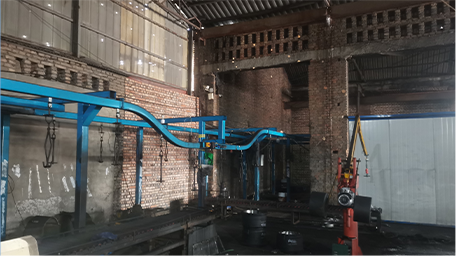Sep . 23, 2024 21:59 Back to list
Understanding Brake Drum Thickness and Its Importance for Vehicle Safety
Understanding Brake Drum Thickness Importance and Maintenance
Brake drums play a crucial role in the braking system of vehicles, serving as a key component that interacts with brake shoes to slow down or stop the vehicle. The thickness of the brake drum is an important factor that affects its performance, longevity, and overall safety. This article will delve into the significance of brake drum thickness, how it impacts vehicle performance, and the maintenance practices to ensure optimal braking efficiency.
The Importance of Brake Drum Thickness
The thickness of a brake drum is critical because it directly influences the heat dissipation capabilities and structural integrity of the drum. When brakes are applied, friction is generated between the brake shoes and the brake drum, leading to heat buildup. A thicker drum can absorb and dissipate this heat more effectively, which helps prevent brake fade – a condition where brakes become less effective due to overheating.
Moreover, brake drums are designed to wear down over time. As the friction material on the brake shoes wears away, it can lead to increased contact with the drum, which results in further wear and potentially a reduction in the drum's thickness. Manufacturers often specify minimum thickness levels for brake drums; if the thickness falls below this threshold, the drum must be either resurfaced or replaced to ensure safe braking performance.
Factors Affecting Brake Drum Thickness
Several factors can influence the wear and tear of brake drums, and understanding these can help vehicle owners maintain their braking systems effectively
1. Driving Habits Aggressive driving, frequent braking, and heavy vehicle loads can lead to faster wear on brake drums. Individuals who engage in city driving with numerous stops may experience a higher rate of drum wear than those who primarily drive on highways.
brake drum thickness

2. Material Quality Brake drums are typically made from cast iron or composite materials. Higher-quality materials can withstand heat and wear better, leading to longer-lasting performance.
3. Maintenance Routine Regular inspections and maintenance can significantly extend the lifespan of brake drums. Ensuring that brake pads are replaced regularly and that the entire braking system is functioning properly helps reduce uneven wear on the drum.
Maintenance Tips for Brake Drum Thickness
To keep brake drums in optimal condition, consider the following maintenance tips
- Regular Inspections Schedule routine check-ups for your vehicle’s braking system. Mechanics can measure the thickness of the drums and inform you if they are within safe operational limits.
- Brake Pad Replacement Replace brake pads before they become too thin to ensure they do not damage the drum during operation. Regularly replacing pads can help maintain the integrity of the drum.
- Resurfacing If brake drums become worn but are still above the minimum thickness, they can often be resurfaced to provide a smooth surface for brake shoes and improve braking efficiency.
In conclusion, brake drum thickness is an essential aspect of vehicle safety and performance. Understanding its importance, recognizing the factors that lead to wear, and adhering to proper maintenance practices can help ensure that your vehicle's braking system remains reliable and effective. Prioritizing brake maintenance not only enhances safety but also contributes to the longevity of the vehicle.
-
Durable Brake Drum MAZ for Heavy Duty Trucks | High Performance
NewsAug.26,2025
-
FUWA: Premium Quality, Reliable Performance & Innovative Solutions
NewsAug.25,2025
-
Liza Brake Drum: Superior Quality & Performance for Safe Driving
NewsAug.24,2025
-
Iveco Brake Drum | Premium OE Quality for Daily & Eurocargo
NewsAug.22,2025
-
Your Brake Drum Man: Quality & Performance Parts
NewsAug.21,2025
-
Explore Japan: Ultimate Travel Guide & Authentic Experiences
NewsAug.19,2025
